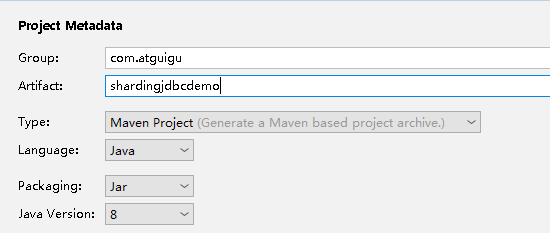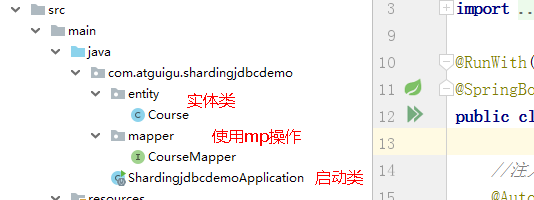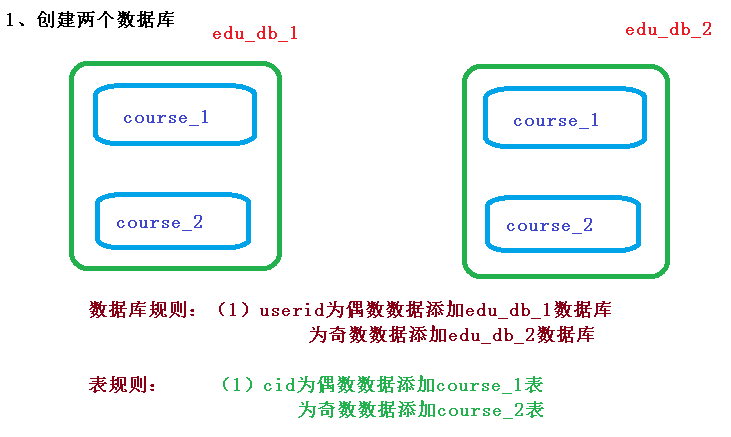- 什么是分库分表
- Sharding-JDBC 简介
- Sharding-JDBC 实现水平分库
- Sharding-JDBC 实现垂直分库
- shardingjdbc 分片策略
- 配置数据源,给数据源起名称, # 水平分库,配置两个数据源
- 一个实体类对应两张表,覆盖
- 配置第一个数据源具体内容,包含连接池,驱动,地址,用户名和密码spring.shardingsphere.datasource.m1.type=com.alibaba.druid.pool.DruidDataSourc e
- 配置第二个数据源具体内容,包含连接池,驱动,地址,用户名和密码
- 配置第三个数据源具体内容,包含连接池,驱动,地址,用户名和密码
- 配置 user_db 数据库里面 t_user 专库专表
- 指定 course 表里面主键 cid 生成策略 SNOWFLAKE
- 指定表分片策略 约定 cid 值偶数添加到 course_1 表,如果 cid 是奇数添加到
- Sharding-JDBC 操作公共表
- 先停止同步STOP SLAVE;
- 修改从库指向到主库,使用上一步记录的文件名以及位点CHANGE MASTER TO
master_host = ‘localhost’, master_user = ‘db_sync’, master_password = ‘db_sync’, master_log_file = ‘mysql-bin.000177’, master_log_pos = 107; - 启动同步START SLAVE;
- 查看Slave_IO_Runing和Slave_SQL_Runing字段值都为Yes,表示同步配置成功。如果不为Yes,请排查相关异常。
show slave status
3、Sharding-JDBC 操作
(1)配置读写分离策略
# user_db 从服务器spring.shardingsphere.datasource.s0.type=com.alibaba.druid.pool.DruidDataSourc e
spring.shardingsphere.datasource.s0.driver-class-name=com.mysql.cj.jdbc.Driver spring.shardingsphere.datasource.s0.url=jdbc:mysql://localhost:3307/user_db?se rverTimezone=GMT%2B8
spring.shardingsphere.datasource.s0.username=root - Sharding-Proxy 简介
什么是 ShardingSphere
1、一套开源的分布式数据库中间件解决方案
2、有三个产品:Sharding-JDBC 和 Sharding-Proxy
3、定位为关系型数据库中间件,合理在分布式环境下使用关系型数据库操作
什么是分库分表
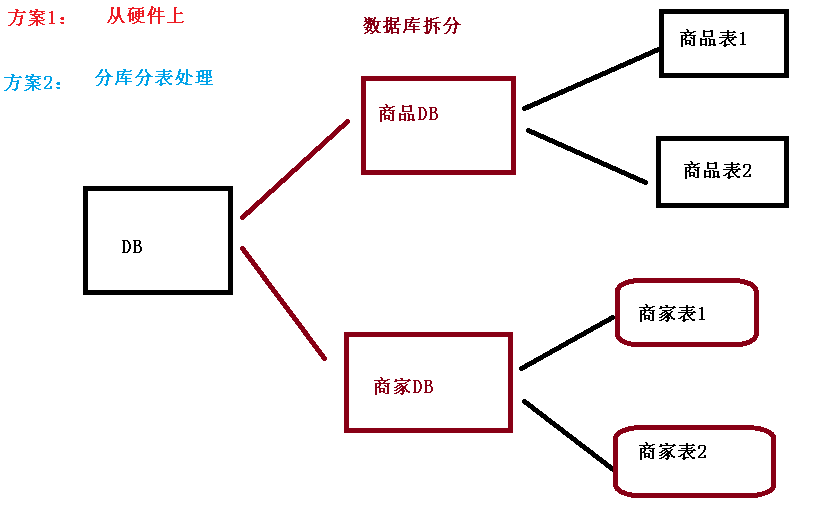
1、数据库数据量不可控的,随着时间和业务发展,造成表里面数据越来越多,如果再去对数 据库表 curd 操作时候,造成性能问题。
2、方案 1:从硬件上
3、方案 2:分库分表
* 为了解决由于数据量过大而造成数据库性能降低问题。
水平分库:库是一样的,表也是相同的 垂直分库: 库是不一样的。垂直分表,分成多个不一样的表
垂直分表,垂直分库都是针对结构发生变化。 水平分库、分表都是按照字段或者数据量进行不同的显示。比如把每一万的数据存到不同表中,把每一万的数据存到不同库中
分库分表的方式
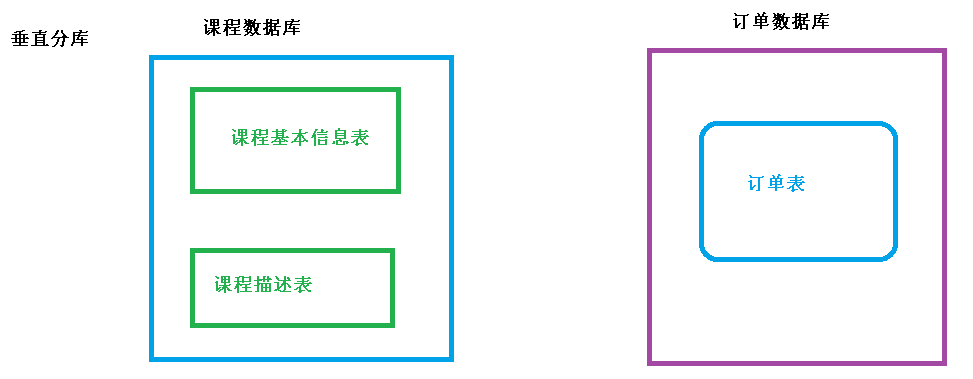
1、分库分表有两种方式:垂直切分和水平切分
2、垂直切分:垂直分表和垂直分库
3、水平切分:水平分表和水平分库
4、垂直分表
(1)操作数据库中某张表,把这张表中一部分字段数据存到一张新表里面,再把这张表另一 部分字段数据存到另外一张表里面
5、垂直分库
(1)把单一数据库按照业务进行划分,专库专表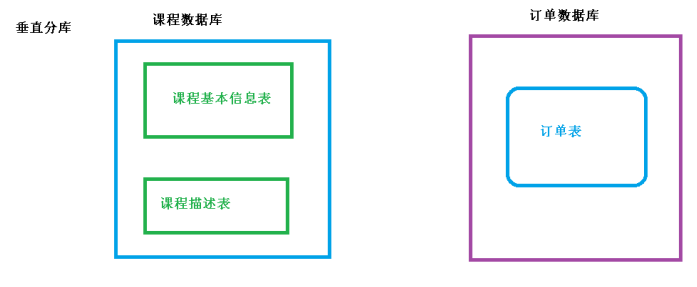
6、水平分库
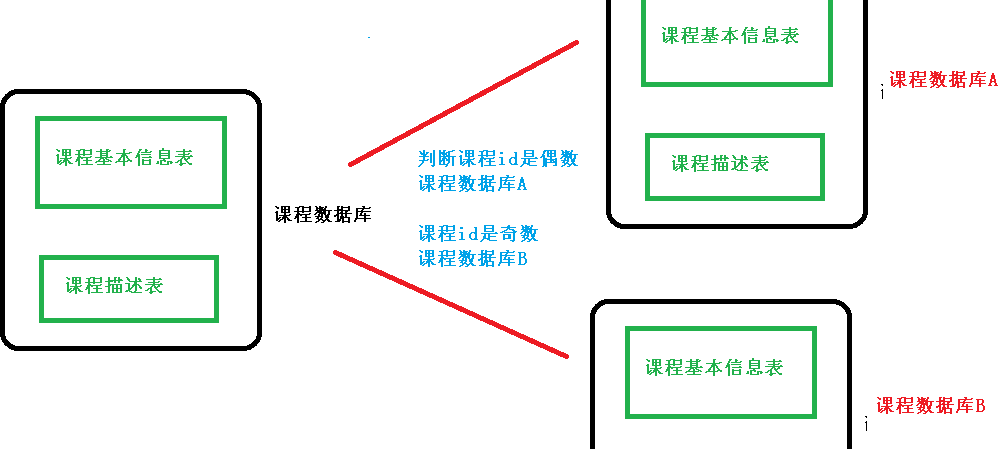
7、水平分表
分库分表应用和问题
1、应用
- 在数据库设计时候考虑垂直分库和垂直分表
- 随着数据库数据量增加,不要马上考虑做水平切分,首先考虑缓存处理,读写分离,使 用索引等等方式,如果这些方式不能根本解决问题了,再考虑做水平分库和水平分表
2、分库分表问题
- 跨节点连接查询问题(分页、排序)
- 多数据源管理问题
Sharding-JDBC 简介
1、是轻量级的 java 框架,是增强版的 JDBC 驱动
2、Sharding-JDBC
(1)主要目的是:简化对分库分表之后数据相关操作
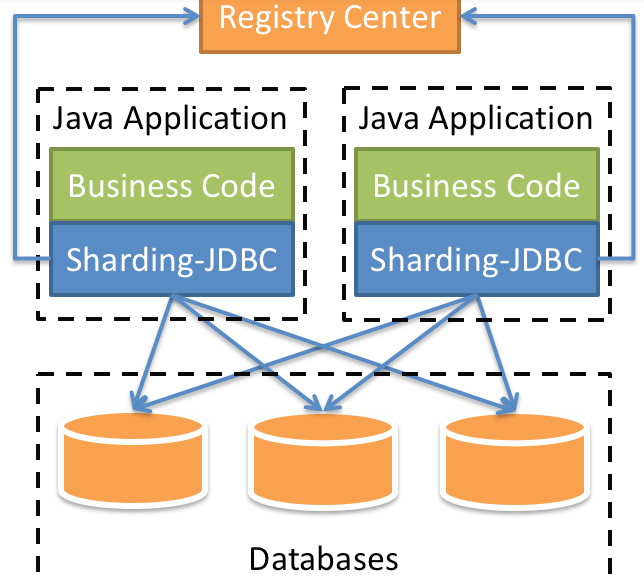
Sharding-JDBC 实现水平分表
1、搭建环境
- 技术:SpringBoot 2.2.1+ MyBatisPlus + Sharding-JDBC + Druid 连接池
- 创建 SpringBoot 工程
- 修改工程 SpringBoot 版本 2.2.1
(4)引入需要的依赖<parent><groupId>org.springframework.boot</groupId><artifactId>spring-boot-starter-parent</artifactId><version>2.2.1.RELEASE</version><relativePath/> <!-- lookup parent from repository --></parent>
<dependencies><dependency><groupId>org.springframework.boot</groupId><artifactId>spring-boot-starter</artifactId></dependency><dependency><groupId>org.springframework.boot</groupId><artifactId>spring-boot-starter-test</artifactId></dependency><dependency><groupId>com.alibaba</groupId><artifactId>druid-spring-boot-starter</artifactId><version>1.1.20</version></dependency><dependency><groupId>mysql</groupId><artifactId>mysql-connector-java</artifactId></dependency><dependency><groupId>org.apache.shardingsphere</groupId><artifactId>sharding-jdbc-spring-boot-starter</artifactId><version>4.0.0-RC1</version></dependency><dependency><groupId>com.baomidou</groupId><artifactId>mybatis-plus-boot-starter</artifactId><version>3.0.5</version></dependency><dependency><groupId>org.projectlombok</groupId><artifactId>lombok</artifactId></dependency></dependencies>
2、按照水平分表的方式,创建数据库和数据库表
- 创建数据库 course_db
- 在数据库创建两张表 course_1 和 course_2
- 约定规则:如果添加课程 id 是偶数把数据添加 course_1,如果奇数添加到 course_2
3、编写代码实现对分库分表后数据的操作
4、配置 Sharding-JDBC 分片策略
(1)在项目 application.properties 配置文件中进行配置
# shardingjdbc 分片策略#配置数据源,给数据源起名称spring.shardingsphere.datasource.names=m1# 一个实体类对应两张表,覆盖spring.main.allow-bean-definition-overriding=true#配置数据源具体内容,包含连接池,驱动,地址,用户名和密码spring.shardingsphere.datasource.m1.type=com.alibaba.druid.pool.DruidDataSourcespring.shardingsphere.datasource.m1.driver-class-name=com.mysql.cj.jdbc.Driver spring.shardingsphere.datasource.m1.url=jdbc:mysql://localhost:3306/course_db? serverTimezone=GMT%2B8spring.shardingsphere.datasource.m1.username=rootspring.shardingsphere.datasource.m1.password=root#指定 course 表分布情况,配置表在哪个数据库里面,表名称都是什么 m1.course_1 , m1.course_2spring.shardingsphere.sharding.tables.course.actual-data-nodes=m1.course_$->{1..2}# 指定 course 表里面主键 cid 生成策略SNOWFLAKE spring.shardingsphere.sharding.tables.course.key-generator.column=cid#主键生成策略 雪花算法spring.shardingsphere.sharding.tables.course.key-generator.type=SNOWFLAKE# 指定分片策略 约定 cid 值偶数添加到 course_1 表,如果cid 是奇数添加到 course_2表spring.shardingsphere.sharding.tables.course.table-strategy.inline.sharding- column=cidspring.shardingsphere.sharding.tables.course.table-strategy.inline.algorithm- expression=course_$->{cid % 2 + 1}# 打开 sql 输出日志spring.shardingsphere.props.sql.show=true
5、编写测试代码@RunWith(SpringRunner.class) @SpringBootTest
public class ShardingjdbcdemoApplicationTests {//注入 mapper@Autowiredprivate CourseMapper courseMapper;//添加课程的方法@Testpublic void addCourse() {for(int i=1;i<=10;i++) {Course course = new Course();course.setCname("java"+i);course.setUserId(100L);course.setCstatus("Normal"+i);courseMapper.insert(course);}}//查询课程的方法@Testpublic void findCourse() {QueryWrapper<Course> wrapper = new QueryWrapper<>();wrapper.eq("cid",465114665106538497L);Course course = courseMapper.selectOne(wrapper);System.out.println(course);}}
Sharding-JDBC 实现水平分库
1、需求分析
2、创建数据库和表
3、在 SpringBoot 配置文件配置数据库分片规则
# shardingjdbc 分片策略# 配置数据源,给数据源起名称, # 水平分库,配置两个数据源spring.shardingsphere.datasource.names=m1,m2# 一个实体类对应两张表,覆盖spring.main.allow-bean-definition-overriding=true#配置第一个数据源具体内容,包含连接池,驱动,地址,用户名和密码spring.shardingsphere.datasource.m1.type=com.alibaba.druid.pool.DruidDataSourcespring.shardingsphere.datasource.m1.driver-class-name=com.mysql.cj.jdbc.Driverspring.shardingsphere.datasource.m1.url=jdbc:mysql://localhost:3306/edu_db_1?serverTimezone=GMT%2B8spring.shardingsphere.datasource.m1.username=rootspring.shardingsphere.datasource.m1.password=root#配置第二个数据源具体内容,包含连接池,驱动,地址,用户名和密码spring.shardingsphere.datasource.m2.type=com.alibaba.druid.pool.DruidDataSourcespring.shardingsphere.datasource.m2.driver-class-name=com.mysql.cj.jdbc.Driverspring.shardingsphere.datasource.m2.url=jdbc:mysql://localhost:3306/edu_db_2?serverTimezone=GMT%2B8spring.shardingsphere.datasource.m2.username=rootspring.shardingsphere.datasource.m2.password=root#指定数据库分布情况,数据库里面表分布情况 # m1 m2 course_1 course_2spring.shardingsphere.sharding.tables.course.actual-data-nodes=m$->{1..2}.course_$->{1..2}# 指定 course 表里面主键 cid 生成策略 SNOWFLAKEspring.shardingsphere.sharding.tables.course.key-generator.column=cidspring.shardingsphere.sharding.tables.course.key-generator.type=SNOWFLAKE# 指定表分片策略 约定 cid 值偶数添加到 course_1 表,如果 cid 是奇数添加到course_2 表spring.shardingsphere.sharding.tables.course.table-strategy.inline.sharding-column=cidspring.shardingsphere.sharding.tables.course.table-strategy.inline.algorithm-expression=course_$->{cid % 2 + 1}# 指定数据库分片策略 约定 user_id 是偶数添加 m1,是奇数添加 m2#spring.shardingsphere.sharding.default-database-strategy.inline.sharding- column=user_id#spring.shardingsphere.sharding.default-database-strategy.inline.algorithm-expression=m$->{user_id % 2 + 1}spring.shardingsphere.sharding.tables.course.database-strategy.inline.sharding-column=user_idspring.shardingsphere.sharding.tables.course.database-strategy.inline.algorithm-expression=m$->{user_id % 2 + 1}# 打开 sql 输出日志spring.shardingsphere.props.sql.show=true
4、编写测试方法
//======================测试水平分库=====================//添加操作@Testpublic void addCourseDb() {Course course = new Course();course.setCname("javademo1");//分库根据 user_idcourse.setUserId(111L);course.setCstatus("Normal1");courseMapper.insert(course);}//查询操作@Testpublic void findCourseDb() {QueryWrapper<Course> wrapper = new QueryWrapper<>();//设置 userid 值wrapper.eq("user_id",100L);//设置 cid 值wrapper.eq("cid",465162909769531393L);Course course = courseMapper.selectOne(wrapper);System.out.println(course);}
Sharding-JDBC 实现垂直分库
1、需求分析
2、创建数据库和表

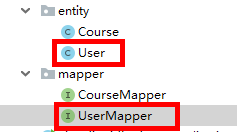
3、编写操作代码
创建 user 实体类和 mapper
@Data@TableName(value = "t_user")public class User {private Long userId;private String username;private String ustatus;}
配置垂直分库策略
- 在 application.properties 进行配置
```properties
shardingjdbc 分片策略
配置数据源,给数据源起名称, # 水平分库,配置两个数据源
spring.shardingsphere.datasource.names=m1,m2,m0
一个实体类对应两张表,覆盖
spring.main.allow-bean-definition-overriding=true
配置第一个数据源具体内容,包含连接池,驱动,地址,用户名和密码spring.shardingsphere.datasource.m1.type=com.alibaba.druid.pool.DruidDataSourc e
spring.shardingsphere.datasource.m1.driver-class-name=com.mysql.cj.jdbc.Driver spring.shardingsphere.datasource.m1.url=jdbc:mysql://localhost:3306/edu_db_1?serverTimezone=GMT%2B8 spring.shardingsphere.datasource.m1.username=root spring.shardingsphere.datasource.m1.password=root
配置第二个数据源具体内容,包含连接池,驱动,地址,用户名和密码
spring.shardingsphere.datasource.m2.type=com.alibaba.druid.pool.DruidDataSource spring.shardingsphere.datasource.m2.driver-class-name=com.mysql.cj.jdbc.Driver spring.shardingsphere.datasource.m2.url=jdbc:mysql://localhost:3306/edu_db_2?serverTimezone=GMT%2B8 spring.shardingsphere.datasource.m2.username=root spring.shardingsphere.datasource.m2.password=root
配置第三个数据源具体内容,包含连接池,驱动,地址,用户名和密码
spring.shardingsphere.datasource.m0.type=com.alibaba.druid.pool.DruidDataSource spring.shardingsphere.datasource.m0.driver-class-name=com.mysql.cj.jdbc.Driver spring.shardingsphere.datasource.m0.url=jdbc:mysql://localhost:3306/user_db?serverTimezone=GMT%2B8 spring.shardingsphere.datasource.m0.username=root spring.shardingsphere.datasource.m0.password=root
配置 user_db 数据库里面 t_user 专库专表
spring.shardingsphere.sharding.tables.t_user.actual-data-nodes=m$->{0}.t_user
指定 course 表里面主键 cid 生成策略 SNOWFLAKE
spring.shardingsphere.sharding.tables.t_user.key-generator.column=user_id spring.shardingsphere.sharding.tables.t_user.key-generator.type=SNOWFLAKE
指定表分片策略 约定 cid 值偶数添加到 course_1 表,如果 cid 是奇数添加到
course_2 表 spring.shardingsphere.sharding.tables.t_user.table-strategy.inline.sharding-column=user_id spring.shardingsphere.sharding.tables.t_user.table-strategy.inline.algorithm-expression=t_user
编写测试代码```java@Autowiredprivate UserMapper userMapper;//======================测试垂直分库==================//添加操作@Testpublic void addUserDb() {User user = new User();user.setUsername("lucy");user.setUstatus("a");userMapper.insert(user);}
Sharding-JDBC 操作公共表
1、公共表
- 存储固定数据的表,表数据很少发生变化,查询时候经常进行关联
- 在每个数据库中创建出相同结构公共表
2、在多个数据库都创建相同结构公共表


3、在项目配置文件 application.properties 进行公共表配置
# 配置公共表
spring.shardingsphere.sharding.broadcast-tables=t_udict spring.shardingsphere.sharding.tables.t_udict.key-generator.column=dictid spring.shardingsphere.sharding.tables.t_udict.key-generator.type=SNOWFLAKE
4、编写测试代码
- 创建新实体类和 mapper
@Data
@TableName(value = “t_udict”) public class Udict {
private Long dictid;
private String ustatus;
private String uvalue;
}
- 编写添加和删除方法进行测试
@Autowiredprivate UdictMapper udictMapper;//======================测试公共表===================//添加操作@Testpublic void addDict() {Udict udict = new Udict();udict.setUstatus("a");udict.setUvalue("已启用");udictMapper.insert(udict);}//删除操作@Testpublic void deleteDict() {QueryWrapper<Udict> wrapper = new QueryWrapper<>();//设置 userid 值wrapper.eq("dictid",465191484111454209L);udictMapper.delete(wrapper);}
Sharding-JDBC 实现读写分离

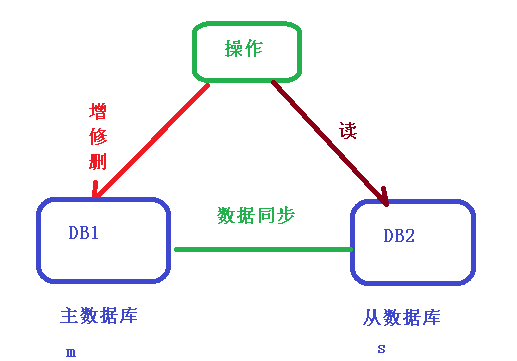
1、读写分离概念
读写分离原理:
Sharding-JDBC 通过 sql 语句语义分析,实现读写分离过程,不会做数据同步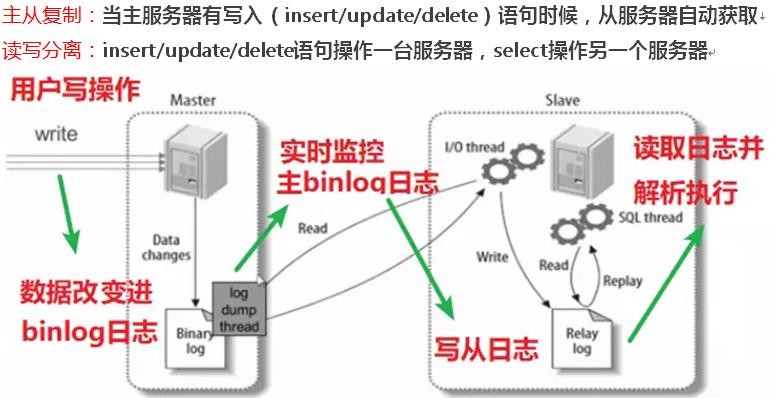
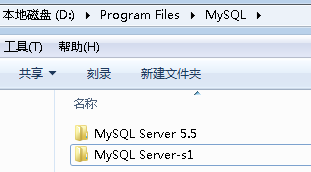
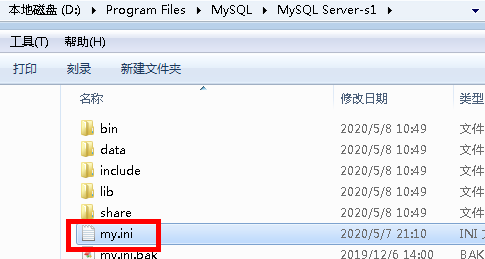
2、MySQL 配置读写分离
第一步 创建两个 MySQL 数据库服务,并且启动两个 MySQL 服务
- 复制之前MySQL 目录
- 修改复制之后配置文件
- 修改端口号,文件路径
- 需要把数据文件目录再复制一份
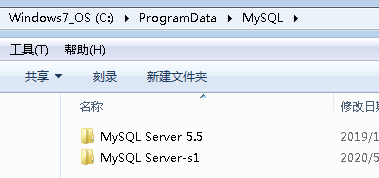




- 把复制修改之后从数据库在 windows 安装服务
- 使用命令: mysqld install mysqls1 —defaults-file=”D:\Program Files\MySQL\MySQL Server-s1\my.ini”
第二步 配置 MySQL 主从服务器
- 在主服务器配置文件
[mysqld] #开启日志
log‐bin = mysql‐bin
#设置服务id,主从不能一致
server‐id = 1
#设置需要同步的数据库binlog‐do‐db=user_db #屏蔽系统库同步binlog‐ignore‐db=mysql
binlog‐ignore‐db=information_schema binlog‐ignore‐db=performance_schema
- 在从服务器配置文件
[mysqld] #开启日志
log‐bin = mysql‐bin
#设置服务id,主从不能一致
server‐id = 2


#设置需要同步的数据库replicate_wild_do_table=user_db.% #屏蔽系统库同步
replicate_wild_ignore_table=mysql.% replicate_wild_ignore_table=information_schema.% replicate_wild_ignore_table=performance_schema.%
- 把主和从服务器重启
第三步 创建用于主从复制的账号#切换至主库bin目录,登录主库mysql ‐h localhost ‐uroot ‐p #授权主备复制专用账号
GRANT REPLICATION SLAVE ON . TO ‘db_sync’@’%’ IDENTIFIED BY ‘db_sync’;
#刷新权限
FLUSH PRIVILEGES;
#确认位点 记录下文件名以及位点
show master status;
第四步 主从数据同步设置
#切换至从库bin目录,登录从库
mysql ‐h localhost ‐P3307 ‐uroot ‐p
先停止同步STOP SLAVE;
修改从库指向到主库,使用上一步记录的文件名以及位点CHANGE MASTER TO
master_host = ‘localhost’, master_user = ‘db_sync’, master_password = ‘db_sync’, master_log_file = ‘mysql-bin.000177’, master_log_pos = 107;
启动同步START SLAVE;
查看Slave_IO_Runing和Slave_SQL_Runing字段值都为Yes,表示同步配置成功。如果不为Yes,请排查相关异常。
show slave status
3、Sharding-JDBC 操作
(1)配置读写分离策略
# user_db 从服务器spring.shardingsphere.datasource.s0.type=com.alibaba.druid.pool.DruidDataSourc e
spring.shardingsphere.datasource.s0.driver-class-name=com.mysql.cj.jdbc.Driver spring.shardingsphere.datasource.s0.url=jdbc:mysql://localhost:3307/user_db?se rverTimezone=GMT%2B8
spring.shardingsphere.datasource.s0.username=root
spring.shardingsphere.datasource.s0.password=root
# 主库从库逻辑数据源定义 ds0 为user_db spring.shardingsphere.sharding.master-slave-rules.ds0.master-data-source- name=m0
spring.shardingsphere.sharding.master-slave-rules.ds0.slave-data-source- names=s0
# 配置 user_db 数据库里面 t_user 专库专表#spring.shardingsphere.sharding.tables.t_user.actual-data-nodes=m$->{0}.t_user # t_user 分表策略,固定分配至 ds0 的t_user 真实表spring.shardingsphere.sharding.tables.t_user.actual-data-nodes=ds0.t_user
(2)编写测试代码
//添加操作
@Test
public void addUserDb() {
User user = new User();
user.setUsername(“lucymary”);
user.setUstatus(“a”);
userMapper.insert(user);
}
//查询操作
@Test
public void findUserDb() {
QueryWrapper
//设置 userid 值
wrapper.eq(“user_id”,465508031619137537L);
User user = userMapper.selectOne(wrapper);
System.out.println(user);
}
Sharding-Proxy 简介
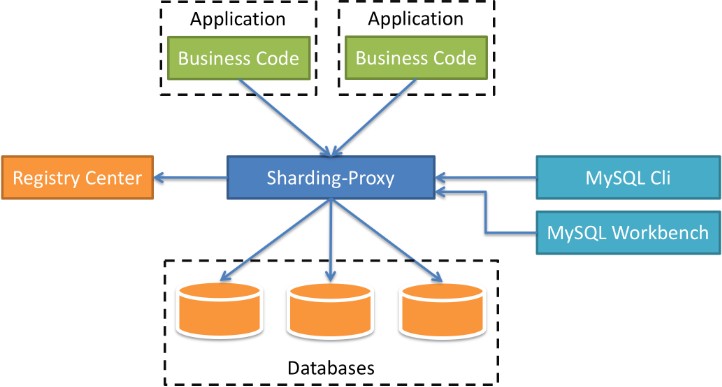
1、定位为透明的数据库代理端
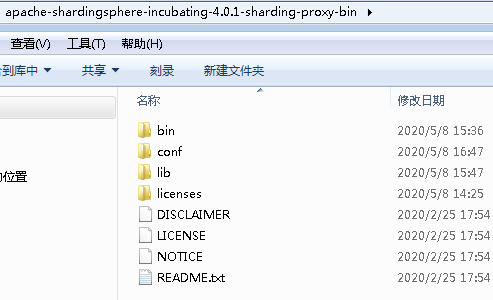
2、Sharding-Proxy 独立应用,需要安装服务,进行分库分表或者读写分离配置,启动使用
3、安装
- 下载安装软件
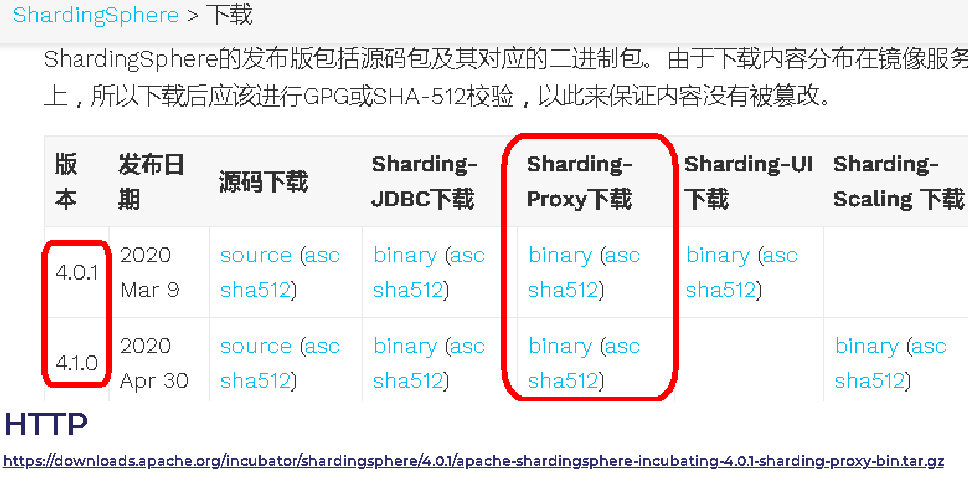
- 把下载之后压缩文件,解压,启动 bin 目录启动文件就可以了
Sharding-Proxy 配置(分表)
1、进入 conf 目录,修改文件 server.yaml,打开两段内容注释
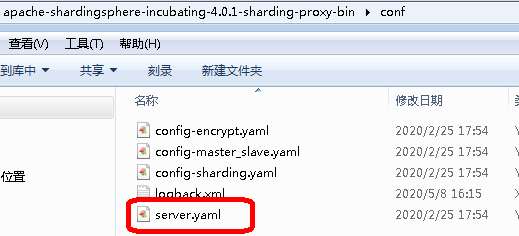
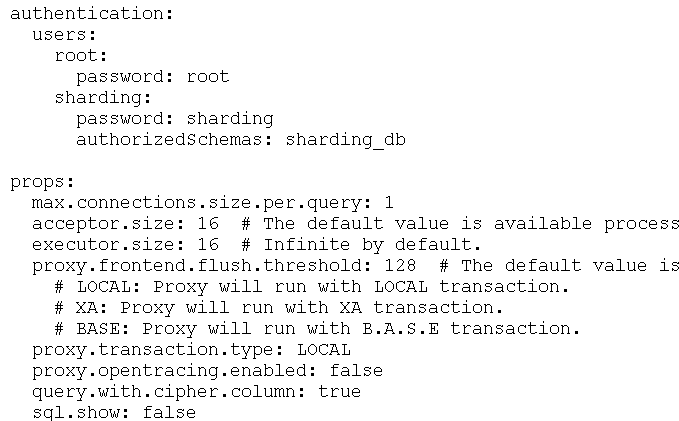


2、进入 conf 目录,修改 config-sharding.yaml
(1)复制 mysql 驱动 jar 包到 lib 目录
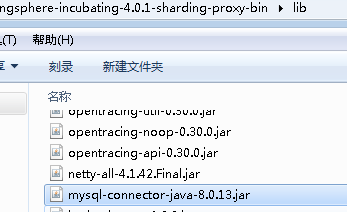
(2)配置分库分表规则
schemaName: sharding_db
dataSources:
ds_0:
url: jdbc:mysql://127.0.0.1:3306/edu_1?serverTimezone=UTC&useSSL=false username: root
password: root connectionTimeoutMilliseconds: 30000
idleTimeoutMilliseconds: 60000
maxLifetimeMilliseconds: 1800000
maxPoolSize: 50
shardingRule:
tables:
torder:
actualDataNodes: ds${0}.torder${0..1} tableStrategy:
inline:
shardingColumn: orderid algorithmExpression: t_order${orderid % 2}
keyGenerator:
type: SNOWFLAKE
column: order_id bindingTables:
- t_order defaultDatabaseStrategy:
inline:
shardingColumn: user_id algorithmExpression: ds${0}
defaultTableStrategy:
none:
3、启动 Sharding-Proxy 服务
(1)Sharding-Proxy 默认端口号 3307
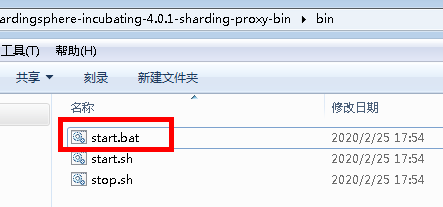

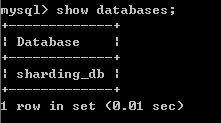
4、通过 Sharding-Proxy 启动端口进行连接
- 打开 cmd 窗口连接 Sharding-Proxy,连接方式和连接 mysql 一样的

- 进行 sql 命令操作看到只有一个库
- 在 sharding_db 数据库创建表


(4)向表添加一条记录
5、回到本地 3306 端口实际数据库中,看到已经创建好了表和添加数据
 Sharding-Proxy 配置(分库)
Sharding-Proxy 配置(分库)

1、创建两个数据库
2、找到 conf 目录,config-sharding.yaml
schemaName: sharding_db
dataSources:
ds_0:
url: jdbc:mysql://127.0.0.1:3306/edu_db_1?serverTimezone=UTC&useSSL=false username: root
password: root connectionTimeoutMilliseconds: 30000
idleTimeoutMilliseconds: 60000
maxLifetimeMilliseconds: 1800000
maxPoolSize: 50 ds_1:
url: jdbc:mysql://127.0.0.1:3306/edu_db_2?serverTimezone=UTC&useSSL=false username: root


password: root connectionTimeoutMilliseconds: 30000
idleTimeoutMilliseconds: 60000
maxLifetimeMilliseconds: 1800000
maxPoolSize: 50
shardingRule:
tables:
torder:
actualDataNodes: ds${0..1}.torder${1..2} tableStrategy:
inline:
shardingColumn: orderid
algorithmExpression: t_order${orderid % 2 + 1} keyGenerator:
type: SNOWFLAKE
column: order_id bindingTables:
- t_order defaultDatabaseStrategy:
inline:
shardingColumn: user_id algorithmExpression: ds${user_id % 2}
defaultTableStrategy:
none:
3、启动 Sharding-Proxy 服务
4、打开 cmd 仓库,连接 Sharding-Proxy 服务
- 创建数据库表,向表添加记录

- 连接本地 3306 的 MySql 数据库服务器,表已经创建出来,表里面有数据
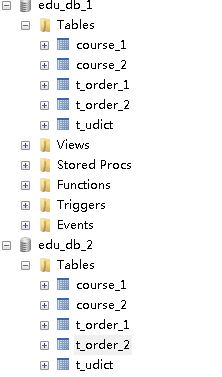

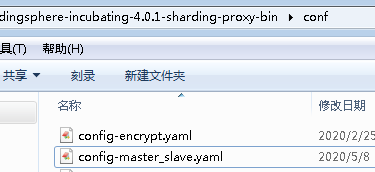 Sharding-Proxy 配置(读写分离)
Sharding-Proxy 配置(读写分离)

1、创建三个数据
2、修改 conf 里面配置文件,config-master-slave.yaml
schemaName: master_slave_db dataSources:
master_ds:
url: jdbc:mysql://127.0.0.1:3306/demo_ds_master?serverTimezone=UTC&useSSL=false username: root
password: root connectionTimeoutMilliseconds: 30000
idleTimeoutMilliseconds: 60000
maxLifetimeMilliseconds: 1800000
maxPoolSize: 50 slave_ds_0:
url: jdbc:mysql://127.0.0.1:3306/demo_ds_slave_0?serverTimezone=UTC&useSSL=false username: root
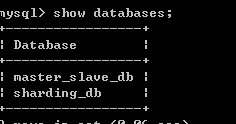
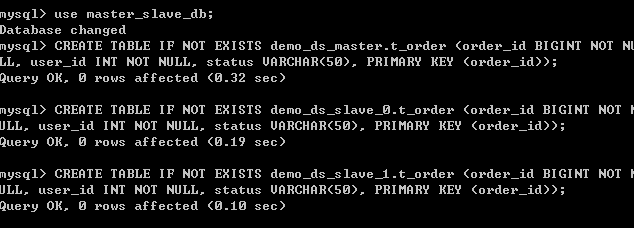
password: root connectionTimeoutMilliseconds: 30000
idleTimeoutMilliseconds: 60000
maxLifetimeMilliseconds: 1800000
maxPoolSize: 50 slave_ds_1:
url: jdbc:mysql://127.0.0.1:3306/demo_ds_slave_1?serverTimezone=UTC&useSSL=false username: root
password: root connectionTimeoutMilliseconds: 30000
idleTimeoutMilliseconds: 60000
maxLifetimeMilliseconds: 1800000
maxPoolSize: 50
masterSlaveRule: name: ms_ds masterDataSourceName: master_ds slaveDataSourceNames:
name: ms_ds masterDataSourceName: master_ds slaveDataSourceNames:
- slave_ds_0
- slave_ds_1
3、启动 Sharding-Proxy 服务
4、通过 cmd 连接 Sharding-Proxy,进行创建表和添加记录操作
- 在主数据库和从数据库里面,都创建数据库表
- 向表添加记录,不指定向哪个库添加
- 把添加数据添加到主数据库里面


(3)查询数据库表数据,不指定查询哪个库
* 直接执行查询从库里面的数据
 课程总结
课程总结
一、基本概念
1、什么是 Sharding Sphere 2、什么是分库分表
(1)水平切分和垂直切分
二、Sharding-JDBC
1、什么是 Sharding-JDBC
2、使用 Sharding-JDBC 水平切分3 、使用 Sharding-JDBC 垂直切分4 、使用 Sharding-JDBC 操作公共表
5、使用使用 Sharding-JDBC 读写分离
三、Sharding-Proxy
1、什么是 Sharding-Proxy
2、使用 Sharding-Proxy 分库分表
3、使用 Sharding-Proxy 读写分离
